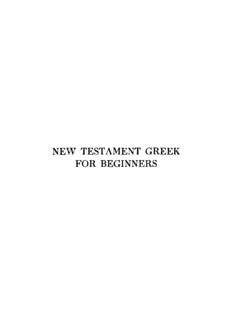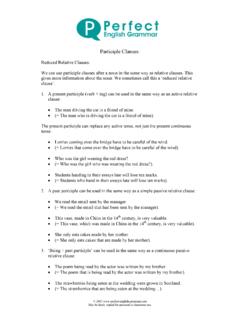Participle Clauses
Found 5 free book(s)NEW TESTAMENT GREEK FOR BEGINNERS - ICOTB
icotb.orgin the participle, and also of the great variety in the shades of thought which the participle can express. But after all it is highly important for the beginner to understand clearly the distinction between the present and the aorist participle, ... Clauses. The Subjunctive After ...
CHAPTER Sequence Labeling for Parts of Speech and Named ...
web.stanford.edupronoun, preposition, adverb, conjunction, participle, and article. Although earlier scholars (including Aristotle as well as the Stoics) had their own lists of parts of speech, it was Thrax’s set of eight that became the basis for descriptions of European ... clauses, or sentences. Coordinating conjunc-tions like and, or, and but join two ...
Participle clauses - Perfect English Grammar
www.perfect-english-grammar.comParticiple Clauses: Reduced Relative Clauses: We can use participle clauses after a noun in the same way as relative clauses. This gives more information about the noun. We sometimes call this a ‘reduced relative clause’. 1. A present participle (verb + ing) can be used in the same way as an active relative clause:
Participle Clauses Exercise 2 - Perfect English Grammar
www.perfect-english-grammar.comParticiple Clauses Exercise 2 Use a participle clause to add the information in italics to the main sentence. 1. The television was stolen. The television was bought 20 years ago. _____ 2. I often buy cheese. The cheese is imported from Paris.
THE SUBJUNCTIVE MOOD: SUMMARY OF FORMS AND …
www.wheelockslatin.comof clauses, including indirect questions (Wheelock, p. 204). SEQUENCE OF TENSES: The above examples clearly indicate the rule for sequence of tenses, i.e., a primary tense main verb (present or future) is followed by a primary tense subjunctive (present = time same or later than main verb, perfect = time before main verb),




